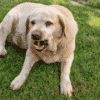Does your Hamster’s underside seem filthy and wet all the time? Is the region close to their anus dirty? Let’s discuss why this happens and how to avoid this condition in your cute little pets.

Hamsters wet underneath/underparts developed due to many reasons, including the following:
- Wet tail (bacterial infection)
- UTI
- Dirty cage environment
- Poor diet
- Stomach problems
- Stress
Wet Tail
This condition, which is sometimes referred to as proliferative ileitis or localized enteritis, manifests itself clinically as diarrhea or loose stools. It is believed that an excess of bacteria in the digestive tract was the cause of diarrhea which made the Hamster underneath wet.
Additionally, wet tail is an exceedingly infectious illness. If your new Hamster was housed in a large cage with other hamsters that already had wet tails, then it is possible that your Hamster and the other hamsters might also get the condition. When selecting a hamster to bring into your house, you should make sure that it is lively and active since this will reduce the possibility that it will have a damp tail.
Uti
UTI, which stands for urinary tract infection, is something that affects hamsters of all ages and can be especially prevalent in older female hamsters. Some of the symptoms include a ruffled coat, excessive drinking, weariness, loss of appetite, and screaming while defecating. Other symptoms include blood in the urine, stinky urine, and filthy and dirty stains around the genital area.
Dirty Cage Environment
Cages for hamsters should be cleaned every day and given a thorough proper washing once a week. This involves emptying out the water bottle and feeding dish, as well as removing any old bedding and debris that may have been there. Wet underparts can develop in hamsters if they are not cleaned out on a regular basis and if they are kept in filthy conditions. The fact that your Hamster is surrounded by stale food and waste increases the risk that germs will grow in the cage, which might lead to the Hamster developing a wet tail.
Poor Diet
Hamsters are pretty excited when they are given tasty goodies like fresh vegetables and fruit. On the other hand, these ought to be regulated. A meal containing excessive treats might cause diarrhea, quickly progressing to wet underparts if the animal is left in filthy surroundings.
Check that any fruit or vegetable your hamster could eat is not toxic to them before you give it to them. Some possibilities are absolutely safe for people to consume yet fatal for hamsters.
Stomach Problems
Hamsters are susceptible to gastrointestinal illnesses just as people are. A fast proliferation of bacteria in the stomach can be the root cause of a wet tail, which manifests itself clinically as diarrhea and a putrid smell.
Stress
In most cases, the most significant cause of wet tails is stress. Within a span of a few weeks, young hamsters can go from a farm/breeder to an animal store, then to a new owner, and then occasionally back to the animal store again after some time. All of these transitions take place in the same location. This would make anyone anxious, but especially a young hamster, especially one so little. This stress leads the bacteria in the stomach to overpopulate that ultimately producing diarrhea.
Signs and Symptoms of Hamster’s Wet Underparts
It is essential that you get familiar with all of the symptoms of wetness underneath so that if your Hamster starts showing indications, you will be able to have them treated as quickly as possible. You must not wait to see if they are better the next day because your Hamster will be stinky and suffering, and they may even pass away before you get them to the veterinarian. Treatment must be started right away if there is any hope of healing.
Signs and symptoms of Hamster’s wet underneath include the following:
- Drowsiness. A severe increase in the amount of sleep, limb weakness, a decrease in physical activity, and a loss of physical strength.
- Absence of an appetite and refusal to drink. Because lack of drinking might cause dehydration, it is essential to regularly provide your Hamster with fresh water while undergoing therapy using either a sterile syringe or a dropper you acquire from your veterinarian. They can pass away rather suddenly if they become dehydrated.
- Watery diarrhea in consistency may be found all over the cage or in puddles at the corner of the toilet.
- Hamsters with damp tails have a stinky, dirty bottom that may be dark, black, or very sticky. This bottom may also be unclean and have a bad odor.
- The scent of a wet underneath is terrible. You should get aid without delay if you notice that your Hamster has a strong odor or one that is significantly worse than normal.
- An indication of overall sickness is a coat that is rumpled or unclean.
- The Hamster walks in an abnormal manner, hunching its back and waddling rather than walking normally.
If you observe any of these symptoms, it is imperative that you take your pet to a veterinarian that specializes in small animals or exotic animals as soon as possible. A wet tail can be fatal if it is not addressed.
How Should the Hamster Wet Underneath Be Treated
To successfully treat your Hamster’s wet underparts, you must first confirm that your pet has any bacterial or hygiene issues. Keep in mind that although diarrhea is a symptom of a bacterial illness (wet tail), your Hamster might have diarrhea/loose motions for reasons of having hygienic or other physiological health issues. For instance, if your Hamster consumes any vegetables that are high in water content, he may get diarrhea as a result of their consumption.
If you are unsure of what causes diarrhea, the best place to start is with a veterinarian specializing in treating exotic animals.
If it turns out that he does have a bacterial illness, your Hamster vet will most likely write him a prescription for anti-bacterial drugs that are appropriate for hamsters and may also prescribe some fluid therapy to help him rehydrate.
If he is not eating, you may have to use a syringe to feed him exceptional hamster food or vegetable mix food.
You can also try administering anti-bacterial drops to your Hamster at home if you cannot take it to a specialist that treats exotic pets. If, after a few days of using these drops, you see that your Hamster’s condition has not improved, you should make an appointment with a veterinarian as soon as possible. The health of exotic animals can deteriorate exceptionally rapidly, and even a tiny amount of delay could result in the Hamster’s death.
How to Avoid Your Hamster Getting Wet Underparts?
Even if you take excellent care of your Hamster, it is still possible for it to contract wet underparts. It’s all up to the randomness of the deck. Nevertheless, there are measures that you may take to avoid it as much as is humanly feasible. These measures include the following:
- Check to see if any hamsters in the cage have damp tails, and make sure the cage is clean before buying a hamster.
- Reduce the amount of handling you give baby hamsters.
- Weekly cage cleaning with disinfectant and daily spot cleaning is required for your Hamster.
- Separate all hamsters, including newcomers, until a veterinarian has had a chance to examine their overall health.
- When new hamsters come into the house, it is essential to ensure they are kept in a stress-free environment.
- Why Is My Hamster Filling His Tube With Bedding? [Full-Guide]
- What Is a Ghost Hamster? [Guide & Advice]
What Kinds of Hamsters Are Most in Danger
Hamsters of any age or breed are susceptible to developing wet underparts or wet tails. On the other hand, there are a number of factors that, depending on how they are combined, might either indicate a higher or lower likelihood of getting the condition. Due to the length of their fur, Teddy Bear hamsters and Syrian hamsters of less than three months are the most susceptible to this condition. Elderly hamsters, regardless of breed, are sometimes unable to fully clean themselves owing to their advanced age, making them another high-risk category. The incidence of wet underparts in Roborovski dwarf hamsters is statistically the lowest of all hamster breeds.

Doctor of Veterinary Medicine (D.V.M.) at Nation Taiwan University,Master of Science (M.S.) in Biomedical Engineering at National Taiwan University of Science and Technology




